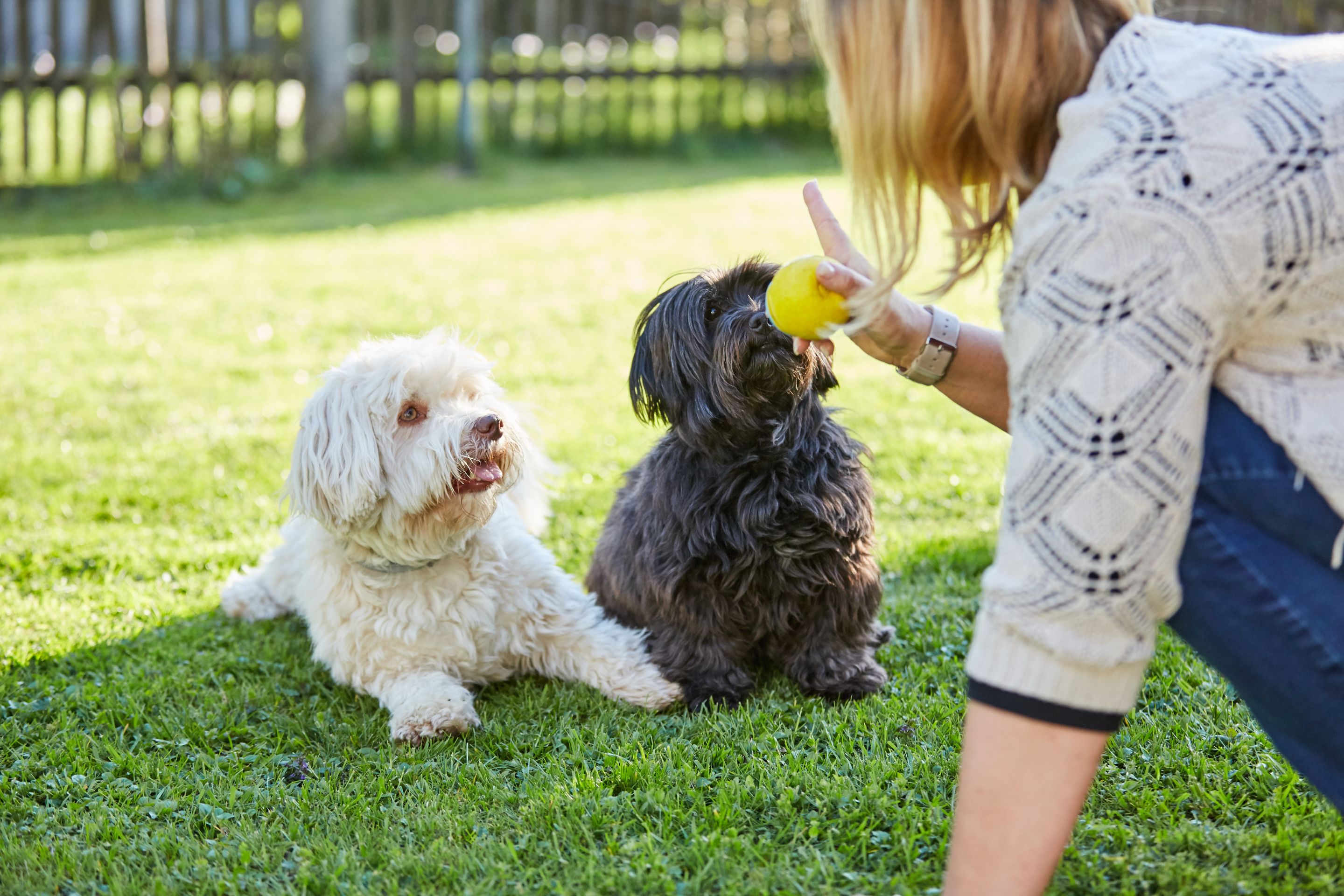How to train a dog
Want to know how to train a dog? Training a dog requires patience, consistency, positive reinforcement, and understanding. Here's a step-by-step guide to get you started:
1. Choose the Right Training Method
- Positive Reinforcement: This is the most recommended method. When your dog does something you like, you reward it with something it loves, like treats, praise, or playtime. This encourages the dog to repeat that behavior.
2. Set Up a Routine
- Dogs thrive on routine. Set specific times for meals, potty breaks, and training sessions every day.
3. Begin with Basic Commands
- Sit: Hold a treat close to your dog's nose. Move your hand up, allowing its head to follow the treat and causing its bottom to lower. Once they're in a sitting position, say "Sit," give them the treat, and share affection.
- Stay: Start with your dog in the “Sit” position. Open the palm of your hand in front of you and say "Stay." Take a few steps back. If your dog stays, give them a treat. Increase the distance over time.
- Come: Put a leash and collar on your dog. Go down to its level and say, "Come," while gently pulling on the leash. When it comes to you, reward it with affection and a treat.
- Down: Hold a treat in your hand and move it down to the ground then out along the ground in front of the dog. They should follow the treat and lay down. As they start to lay down, say “Down” and give them the treat.
- Leave it: Place a treat in both hands. Show one closed fist with the treat inside and say, "Leave it." Let it sniff. Once it stops trying, give them the treat from the other hand.
4. Potty Training
- Regularly take them out for potty breaks, especially after meals or when they wake up.
- Praise them profusely when they do their business outside.
- If they have an accident indoors, clean it up immediately to remove the scent.
5. Socialization
- Expose your dog to different people, animals, environments, and other stimuli. Start this as early as possible, preferably during their puppy phase.
- Positive experiences with these can prevent fearfulness and aggression in the future.
6. Preventing or Correcting Undesired Behaviors
- Be consistent. Don't allow behaviors one day and punish them the next.
- Redirect undesirable behaviors. For instance, if your dog is chewing on furniture, redirect it to a toy.
- Ignore unwanted behaviors like barking for attention or jumping. When the dog realizes it doesn’t get a reaction, it's likely to stop.
7. Crate Training
- Choose an appropriate-sized crate.
- Make the crate a comfortable, positive space. Never use it for punishment.
- Gradually increase the time your dog spends in the crate, starting with short intervals.
8. Advanced Training
- Once the basics are mastered, consider teaching your dog tricks or advanced commands.
- Consider sports like agility or obedience competitions.
9. Consider Professional Help
- If you're having trouble training your dog, consider group dog training classes or hiring a professional dog trainer.
10. Be Patient and Consistent
- Training takes time. Celebrate small successes and keep your expectations realistic.
- Dogs might have off days, just like humans. Be patient and try again later.
Training a dog id not always easy. Hope this helps you learn how to train a dog. Remember, every dog is unique. What works best for one dog might not work for another. The key is to be observant, flexible, and willing to adjust your techniques as needed. Building a bond of trust and understanding with your dog is at the heart of effective training.
Category: Pet Training
Related Articles
Business News
Popular Posts
- Overcoming Negative Thoughts - Strategies for a Positive Mindset
- Cultivating Resilience and Mental Toughness - Keys to Thriving Amidst Lifes Challenges
- MindBalance not only helps individuals but couples stay together longer
- Mind Balance - 100 Innovative Ways it Can Unleash Your Full Potential
- 50 ways to be more like Jesus in everyday life
- Three Sentences from a Billionaire That Changed My Life and Made Me Millions
- Embracing Faith and Self - A Christian Guide to Personal Strengths and Weaknesses
- The Islamic Quest - Transforming Self for a Fulfilling Life in Allahs Light
- Hindu Wisdom for Modern Lives - Balancing Strengths and Weaknesses through Vedic Teachings
- Buddhist Reflections - Navigating the Path of Self-Awareness and Enlightenment
- Universal Pursuit of Happiness - Wisdom from World Religions
- Bridging Divides - Understanding Barriers to Unity and Happiness in World Religions
- Illuminating the Path - Overcoming Ignorance and Misunderstanding in World Religions
- The SmartGuy Vision - A United Future Through Interfaith Love and Respect
- Harnessing Personality Assessment for Enhanced Well-being and Fulfillment
- The Universal Appeal of The Book of Seven by J R Wexler - A Beacon of Harmony and Understanding
- Discovering Hinduism - A Deep Dive into Its Traditions Texts and Teachings
- Understanding Buddhism - Insights into Its Teachings Meditation and Cultural Impact
- Cultivating Key Skills to Overcome Anti-Semitism and Hate
- How Mind Balance Brings People Closer to God
